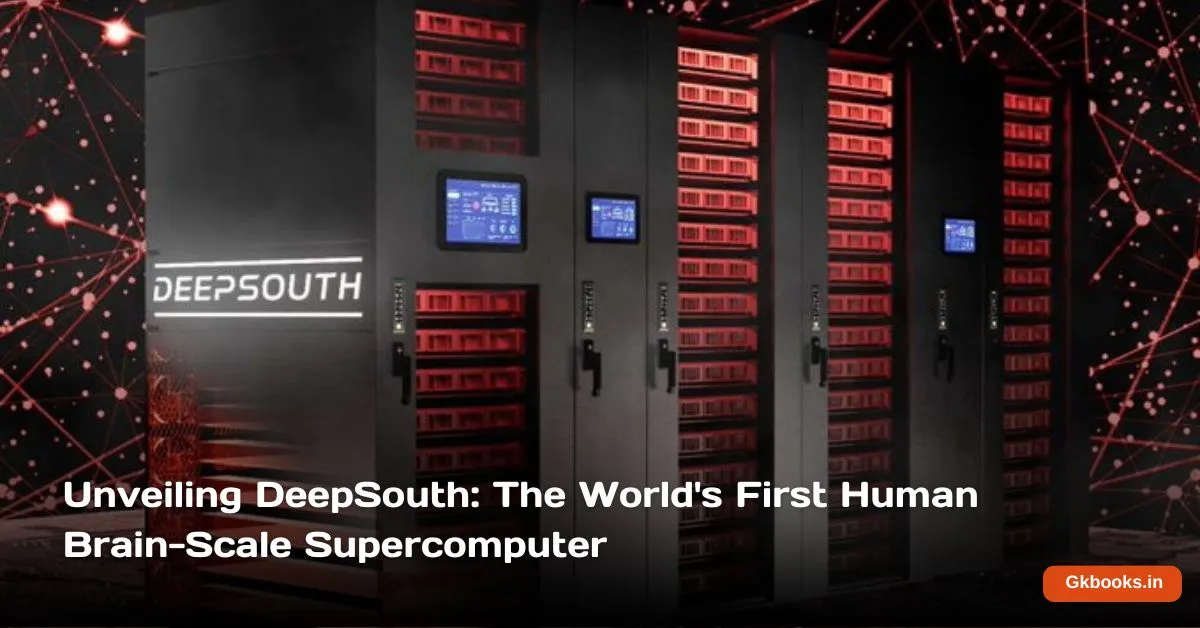Western Sydney University in Australia is making waves in the tech world with the upcoming launch of DeepSouth, the first human brain-scale supercomputer.
Scheduled to go live next year, this groundbreaking development is poised to revolutionize our understanding of neural networks and artificial intelligence.

Key Takeaways ☛ The development of the supercomputer, known as DeepSouth, is underway at Western Sydney University in Australia. ☛ Once operational next year, it will have the capacity to perform 228 trillion synaptic operations per second. ☛ Potentially leading to the creation of a cyborg brain significantly more powerful than our own in the future.
Understanding DeepSouth
Origin and Development
- Location: Developed by Western Sydney University.
- Launch Date: Expected to go live next year.
Unprecedented Capabilities
- Processing Power: Capable of a staggering 228 trillion synaptic operations per second.
- Comparison: Rivals the estimated processing rate of the human brain.
Potential Impact
- Energy Efficiency: Aims to mimic the human brain’s remarkable energy efficiency.
- Exploration: Designed to explore how the brain processes vast amounts of information with minimal power consumption.
The Cyborg Brain Dream
Power of the Human Brain
- Energy Consumption: The human brain operates on just 20 watts of power.
- Processing Capacity: Achieves the equivalent of an exaflop, or a billion-billion operations per second.
DeepSouth’s Mission
- Simulation: Simulates brain-like networks at an unprecedented scale.
- Objective: Understand and replicate the brain’s efficiency for creating a potentially more powerful cyborg brain.
The Worlds first “Neuromorphic Supercomputer” is here.
— Champagne Joshi (@JoshWalkos) December 14, 2023
The DeepSouth supercomputer, being developed at Western Sydney University, is a groundbreaking project in the field of neuromorphic computing. Scheduled to be operational by April 2024, it represents a significant… pic.twitter.com/ZDy2Z4Lrcv
Transforming Neuroscience
Neural Network Simulation Challenges
- Hurdles: Difficulty in simulating brain-like networks at scale.
- Technology Barrier: Standard computers and GPUs are deemed too slow and power-intensive.
DeepSouth’s Solution
- Innovation: A game-changer for neuroscience research.
- Speed and Efficiency: Overcomes the limitations of current simulation methods.
Expert Insights
André van Schaik’s Perspective
- Quote: “Progress in our understanding of how brains compute using neurons is hampered by our inability to simulate brain-like networks at scale.”
- Director at Western Sydney University’s International Centre for Neuromorphic Systems.
Ralph Etienne-Cummings’ View
- Comment: “If you are trying to understand the brain, this will be the hardware to do it on.”
- Affiliation: Johns Hopkins University, Baltimore.
The Global Pursuit of Brain-Like Machines
Diverse Approaches
- Biological Computers: Some researchers are exploring “biological computers” powered by actual brain cells.
- Comparison: DeepSouth stands out as a pioneering approach to creating brain-scale simulations.
Summary in Bullet Points
- DeepSouth is the world’s first human brain-scale supercomputer developed by Western Sydney University in Australia.
- It is scheduled to go live next year and boasts a processing capability of 228 trillion synaptic operations per second, rivalling the human brain’s estimated rate.
- The project aims to understand and replicate the human brain’s remarkable energy efficiency using only 20 watts of power.
- Simulating brain-like networks at scale has been challenging, but DeepSouth aims to overcome this with its innovative approach.
- Expert opinions, including those of André van Schaik and Ralph Etienne-Cummings, highlight the significance of DeepSouth in advancing neuroscience research.
- DeepSouth stands out as a groundbreaking initiative in the global pursuit of brain-like machines, while other researchers explore biological computers powered by brain cells.
You May Like:
No post found!

